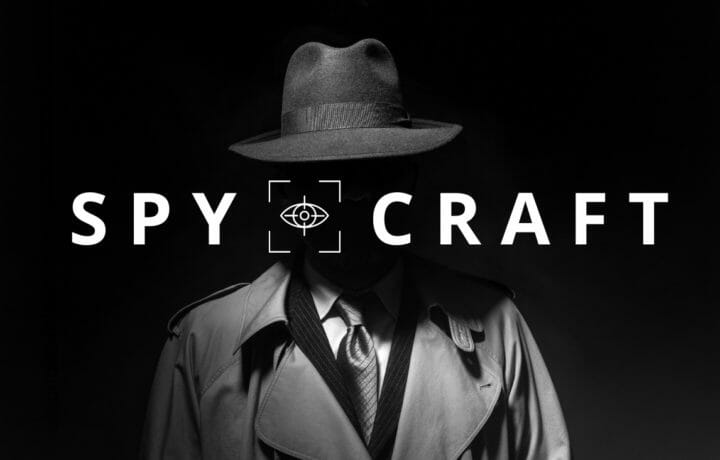I just finished viewing the final episode of the Netflix series Spycraft (2021), and pulled some nuggets of gold from the eight-part series which is loosely based on the 2009 book Spycraft by Robert Wallace and Keith Melton.
The series was interesting, albeit a bit repetitive. If you are going to binge, you will see repeated use of quotes and imagery. If you are just dropping in for one or two segments, you will not have any issue with the production choices. The strength of the series lays not with its visual imagery but with the subject matter experts offering commentary. Some were culled from the ranks of annuitants of the CIA, many who served side-by-side with this writer.
These included:
- Benjamin B. Fischer was the former Chief Historian at the CIA, working out of the Center for the Studies of Intelligence where I enjoyed a History Fellowship in the mid-1990s;
- John Sano, former Deputy Director of National Clandestine Service (aka DDO) ;
- William D. Murry, another HUMINT officer who inspired creative thinking in untying the Gordian Knot of many a conundrum.
- Sandy Grimes who not only served in Moscow, she also was instrumental in the takedown of the notorious Aldrich Ames;
- David Charney, a man whose psych profiles on why insiders break trust are legion, especially his series on Robert Hanssen;
- Robert Wallace, former Director of the Office of Technical Service; and
- Keith Melton, an intelligence aficionado and the man who arguably has the largest personal collection of intelligence minutia – he is also the co-author with Robert Wallace of Spycraft.
The 10 Golden takeaways within Spycraft
- Kompromat – The heavy-handedness to collect kompromat on targets of interest, be they as a source of intelligence or to simply neutralize them at an inauspicious time. The example shared was that of the British Deputy Counsel General in Yekaterinburg whose sexual escapades were shown in all its glory on Russian television in 2011 which served to have him removed (and ultimately resign) from the British Foreign Office. (Episode 3)
- MICE (Money/Ideology/Compromise/Ego) – The discussion on the motivators of the insider is an important nugget, as it helps the watchers put their mind around the unidentified adversary’s perspective. Grimes shared the example of Ames; while Charney shared the example of Hanssen. (Episode 8)
- China’s targeting dossiers – The penetration of OPM and the creation of targeting folders on U.S. persons by China is discussed. The emphasis as to how this information is squirreled away for that day when it is of most use is especially noteworthy. (Episode 4)
- Insider Threat – Charney explains how “ego” is the driver behind “what makes men choose to do what they do in life.” He continues with how the individual rationalizes their breaking of trust as they can “reframe what you’re doing as somehow the right thing to do.” (Episode 8)
- Critical Infrastructure – The cyber threat to critical infrastructure got a broad brush, 30,000 foot overview. Highlighting how food suppliers, financial services, power plants, etc. were all susceptible. They clearly had no way of knowing the Solar Winds and Hanfium attacks of 2020/2021 were upon us. (Episode 7)
- Covert Collection – Sano explained how covert collection efforts exist at all level across all domains. He cited examples of tiny electronic eavesdropping devices which would be implanted up through the SR-71 Blackbird and satellites. (Episodes 1 and 5)
- Covert Communications – The series touches on the variety of covert communications devices used to communicate between asset and handler. The emphasis on how good tradecraft could make detection by those doing the hunting virtually impossible to detect. (Episode 6)
- Sex in Espionage – The most successful of all documented honeytraps can be found within the history of the East German Stassi and their Romeos and Juliets circa 1970 who sought out romantic relationships to penetrate the West. (Episode 3)
- Covert Communication debacles – Russian illegal Anna Chapman, whose ineptitude in use of covert communications served to confirm her clandestine persona. (Episode 3)
- Cryptography – The nod to Thomas Jefferson for his creation of the Jefferson Wheel encryption device in 1795, which amazingly was formally adopted by the U.S. Army 1923-42 as the M-94. (Episode 7)
Spycraft is far from a Hollywood hot take on spies and espionage – it’s a walk through the real tradecraft used by spies and sleuths today and in the past, and a good counterweight to the espionage fiction you see on The Americans. You may not want to binge it, but use this list as a guide to your episode by episode dive into everything from critical infrastructure to cryptography.




